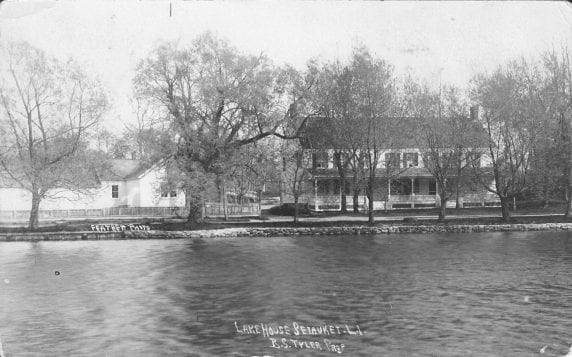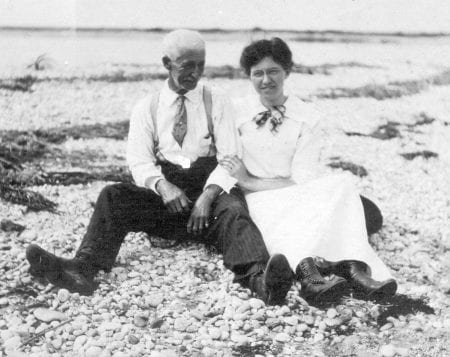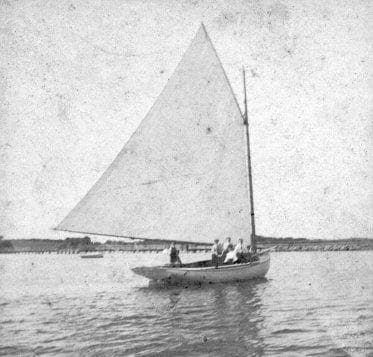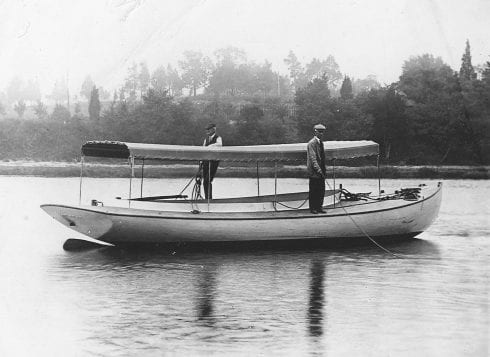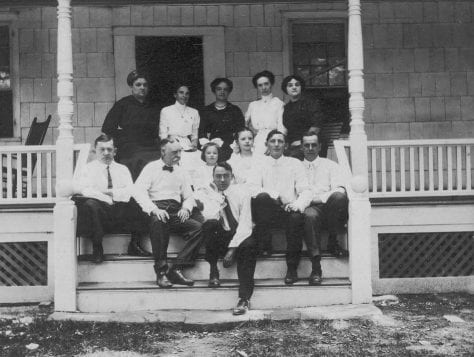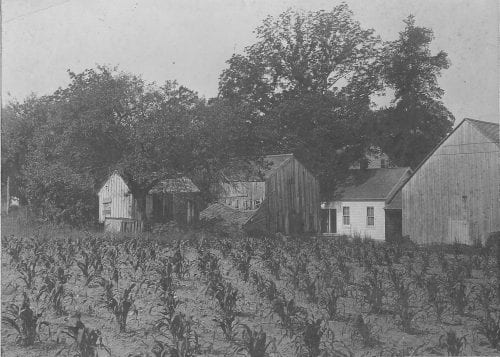A Bit of Setauket Family History and Folklore
By Beverly C. Tyler
Stories, anecdotes and tales are the remembrances that add shape and substance to family history. Recording or writing down these bits of folklife can be an enjoyable experience for family members. It is also an excellent way to keep alive the memory of generations past and preserve the interesting details of the lives of ordinary people, who lived in a different time with a different way of life.
I can remember years ago my father told me a story about his father that had been passed down to him by his cousin. My grandfather died when my father was 12, hence the lack of a more personal remembrance.
My grandfather, Beverly Swift Tyler, had been captain of coastal sailing vessels all his working life. After he retired from the sea, he continued to enjoy sailing and being on the water. He built a 31-foot gaff-rigged catboat, named the Madeline, behind the Lake House which he owned and ran as a hotel and summer boarding house, now the Setauket Neighborhood House. The boat was constructed under the critical eye of neighbors and friends, who had no hesitation about making suggestions to improve the work as it progressed. When completed, the Madeline was considered a fast boat and won a number of sailing races against other boats in the area. One individual, who Grandfather beat quite often, was constantly after him to sell the Madeline. Finally, Grandfather agreed, and he sold the catboat to the man.
The next year Grandfather began work on a new catboat which he completed in 1906 and named the Setauket. While he was building the new boat, the same kibitzers came around to make suggestions. He, very curtly, referred them to the Madeline as being their community boat and that he was building the Setauket by himself.
The Setauket, as related by cousin Roger Tyler, “was oak ribbed with pine planking. The original mast was sixty feet, made of strips of wood bound together making the mast hollow in the center. The mast was (eventually) shortened to forty-five feet. The canvas was very heavy and was cleaned by lying (it) out on the beach and scrubbing with water, scrub brushes and sand.”
The Setauket was raced in Port Jefferson and won consistently against all competition (including the Madeline). It got to be so that they would not tell Bev when a race was to be run and a few times he found out about them only just an hour or so before the race but raced and won anyway.
“The Setauket required two to handle it,” Tyler noted. “The canvas was extremely heavy and difficult to raise and control.”
The Setauket was also used by my grandfather to take summer guests staying at the Lake House on excursions around Port Jefferson Harbor and into Long Island Sound. Grandfather installed a two-cylinder engine in the Setauket, probably after 1913. Then, when the mast was removed a sun cover was added. This arrangement was more comfortable for and still gave guests an enjoyable afternoon on the water.
Grandfather married my grandmother, his third wife, in 1912 at the age of 57. Together they continued to run the Lake House as a hotel and summer resort until 1917, when it was purchased by Eversley Childs and donated to the community.
The Setauket was sold, about 1825, and used to carry coal for a coal company in New Jersey. It was brought back a few years later by Theron and Leon Tyler, cleaned of coal dust and eventually used again as a sailing craft. It finally sunk a number of years later off Horton Point, which is north of Southold on Long Island’s North Fork. My grandfather died Oct. 12, 1926, and is buried in the graveyard of the Caroline Church of Brookhaven in Setauket.
Beverly C. Tyler is a Three Village Historical Society historian and author of books available from the society at 93 North Country Road, Setauket. For more information, call 631-751-3730 or visit www.tvhs.org.

